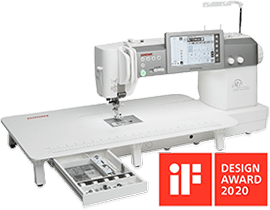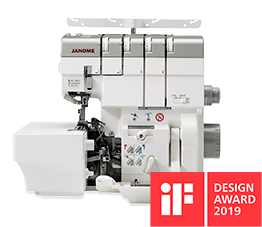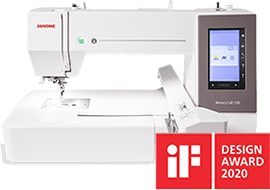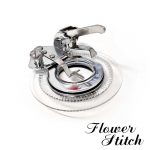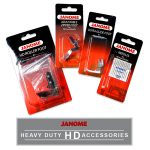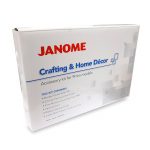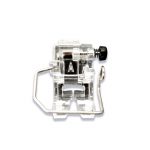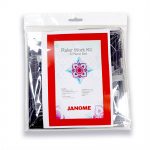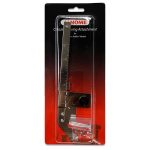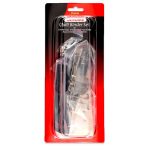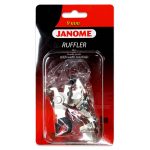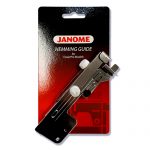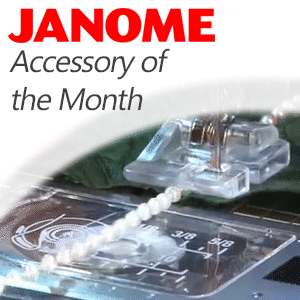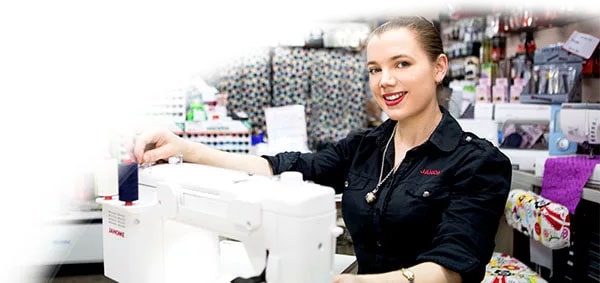No products in the cart.
Sewing Tips & Tricks for Beginners
Here at Janome Sewing Centre, we get a lot of people who are new to sewing buying their first machine, or people trying our a new sewing machine, embroidery machine or overlocker and feel like a beginner again. We want to see you have great success in your sewing, so we offer unlimited FREE sewing lessons for any new machine purchased through our store, whether its online or from from our retail shop in Everton Park, Brisbane.
If you would like some general tips and tricks about sewing, as the sewing machines Brisbane specialists we have a few here to give you a hand to get started. Whether you are using a Janome sewing machine or any other type of machine, you can become a seasoned professional in no time!
Sewing for Beginners
Are you brand new to sewing, unsure what material will be best to work in, or how to thread your machine, perhaps you just are unsure about how fast to use the machine and it’s all a bit new and daunting.
Janome are one of the most trusted and reliable brands worldwide, with machine sales in over 100 countries, they are constantly testing and researching their machines to ensure they are easy to use, and can withstand the rigors from a beginners occasional use through to professionals who use them everyday. You can be sure you have a reliable machine when you buy from Janome.
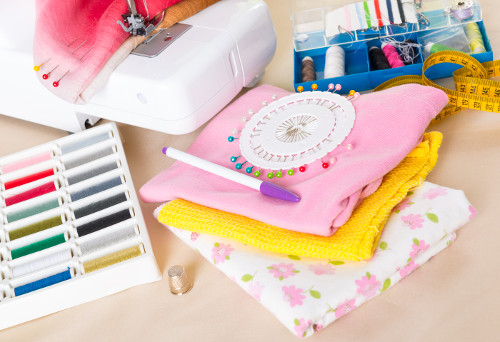
- Practice on scrap fabric.
Test your stitches on something that won’t be the final material, so you can see how it works. If you have already cut out your pattern, use the scraps so you are testing on the same fabric.
- Start with simple patterns and projects.
Make a bag, or something with straight hems to get you started, turning corners and making round edges for necks can be challenging when you aren’t even sure how the machine works. If you are feeling more adventurous for your first foray into sewing, here’s some extra beginner sewing tips along with some great starter projects to help you get underway.
- Use the pedal slowly.
When first starting out, you may feel a little like you are learning to drive, take it slow until you get your confidence, so you don’t risk breaking the thread, or a needle!
- Practice threading the machine.
If at any time you feel like you are stuck with the basics, refer to your manual or contact the team at Janome Sewing Centre for guidance and advice.. it’s through practice that this becomes simpler and easier, until you are doing it quickly and problem free.
Helpful Links for Sewing Beginners
For some handy hints, how-to and what-to-look-for guides and a glossary of the most common sewing technical terms explained please take a look at the following pages for pointers to get you sewing like a pro.
Take a look at About.com for a list of articles and tutorials to get you started, from seams and seam finishes, through to making pockets and working with a purchased pattern.
Another great self-directed learning website is Tutsplus. This is an Australian online learning resource for sewers which offers plenty of free step-by-step instruction guides for bringing fashion designs to life complete with screenshots. Take a look at their sewing tutorials and get practicing.
These links are intended to fill in the blanks and offer guidance. But the best way to learn is in person with a real-life sewing instructor so come into the store for free lessons when you have the time.
[accordions]
If you already own a sewing machine, especially one that has been in your possession for some time, it’s a good idea to make it has been recently serviced before starting. Even the most basic techniques can be made more difficult if a sewing machine isn’t in proper working condition. A service ensures that the mechanics of the machine are in proper working order.
When you need to purchase new sewing machine, as a beginner there are some points to consider. It’s more economical in the long term to purchase a machine with all-metal parts. Machines with plastic components are cheaper to buy. However, with lower build quality they invariably break, and over time the constant replacement and labour costs to install new plastic parts makes them more expensive.
To ensure a good start to your creative sewing adventure, it may be better to consider a basic machine model. An all-metal, simple sewing machine with ‘only’ 12 stitches can often be a better starting alternative than a more complex machine. It will give you time to learn how to sew on a machine without being confused by an overabundance of advanced stitching settings and modes.
Once you have a sewing machine setup it’s time to learn the basics of machine sewing. With all forms of learning, it’s best to approach the situation one step at a time, and sewing on a machine is no different.
Learning how to sew is a ‘hands on’ and practical learning experience. The first basic task you’ll need to practice is being able to thread a sewing machine. Typically, a sewing machine will come with clear and easily understood step-by-step instructions on how to thread your machine. It’s also good idea to also consult the manual to familiarise yourself with all the parts of the machine, as in sewing a lot of terms are used and it can be confusing.
If you have lost your instruction manual, they can usually be found online by doing a search. We have Janome sewing machine instruction manuals that can be purchased cheaply for your convenience.
With your machine threaded you can now start practicing sewing! It’s ideal when you’re first starting out to select fabric that’s accessible to a beginner, fabric that can be easily manipulated as it goes under the needle. There are 3 basic components when choosing a fabric suited for beginner:
- Weight:
Categorised by the weight of the fabric. Sheet fabric would be considered lightweight, for example, while clothing fabric would be more midweight, and thicker upholstery fabric would be a type of heavyweight.
When you are new to machine sewing, it’s best to use a midweight fabric until you get a feel for the machine. Lighter fabrics can be harder to stabilise under the needle, while heavier fabrics are tougher to manoeuvre through a machine and take more skill to sew with the needle.
- Stretch:
Classified by how elastic the fabric is. As a newcomer to machine sewing, it’s easier to characterise fabric into two main groups – stretch or non-stretch fabric. It’s always better as a beginner to start with non-stretch fabric. It’s easier to keep your stitching in line, and you obviously don’t have to worry about the fabric stretching and dimensions changing as you work on it.
- Fibres:
Content of what the fabric is actually made from:- Natural fibres: cotton, silk, linen, etc.
- Man-made fibres: polyester, nylon, acrylic, etc.
It’s recommended to stick with a woven natural fibre like cotton when starting out. Synthetic fibres can take more experience to handle properly under the needle, but natural fibres can be difficult as well, for example silk, which is expensive and should be avoided by beginners.
Skip complicated patterns, shapes and designs. Either plain colours or small prints are ideal when first starting out. Many commercial patterns include a ‘suggested fabrics’ section, which is a good starting guide in what fabric to shop for.
Ensure you buy enough fabric as well. It may be a simple thing, but buying a little more fabric than required, particularly when you are new, is a smart move.
You can start practising how to manipulate the fabric by first learning to sew in a straight line. When starting out, purchase fabric that has thin stripes running down it. This will assist in keeping you guided as you practice your first straight stitch.
When you have this fabric in your possession, follow these steps:
1) Take the fabric and following the stripes, cut a strip approximately 20cm wide and 45cm long. Fold it in half and make a crease – press with an iron to make it a more definite fold.
2) Thread your machine (remember to consult the manual if needed) and choose a needle suitable for the midweight, woven fabric.
3) Selecting an appropriate stitch length is the next step and once again consult your manual to confirm the best stitch length for midweight fabric (usually 2 and a half to 3).
4) Choose the straight stitch option from your machine stitching list (generally the first listed). Start with your needle positioned at the highest point, (always start and end with your needle in this position) and draw up the presser foot.
5) Draw out your bobbin thread about 15cm back from the feed dog as per your instruction manual. Doing this will ensure it won’t get sucked into the machine when you begin sewing.
6) Place the fabric now under the needle, so that it will enter one of the stripes near the crease. Bring down the presser foot to create the friction needed for the feed dog to move along with the fabric as you sew (a handy tip is to use the hand wheel to lower the needle into your fabric layers to begin with).
7) Put your fingers on your fabric and guide it down the stripe under the presser foot. Press down gently on the foot pedal to start.
8) When the needle is in its uppermost position, you can stop sewing and draw up the presser foot (you may use the hand wheel for this), the fabric can now be gently pulled away from the machine. Cut your threads leaving at least 15cms ready for next time.
Congratulations you have just completed a machine straight stitch!
It will make more sense once you have had more hands on experience with your sewing machine. With practice, your fingers will become familiar with how to touch, grasp and hold your fabric layers as they are sewn together.
Once you have perfected a straight stitch, try a different fabric and one without stripes and continue practising to sew straight stitches. To become more competent, use different fabrics of different weights, with a combination of stretch and non-stretch fabrics to grow your experience!
Learn about Sewing with the Everton Park Team
Our sewing centre is much more than just a shop, we offer you an interactive sewing experience where you can take advantage of numerous benefits when shopping with us long after you’ve made your Janome sewing machine purchase.
One of the major perks of buying from us is intended specifically for new sewers and those upgrading to new Janome sewing machines. We give you the opportunity to learn all the ins-and-outs of your new machine by giving you free access to unlimited sewing machine lessons on your particular sewing machine. Yes, that’s right, you can keep coming in for lessons at your leisure until you think you don’t need them anymore whether you buy online, or in-person. We would like you to be fully-confident in your ability to use your new unit with a complete understanding of all its functions, what each is used for and how to get the most out of each feature.
We offer a bundle of extra services and incentives (many for free) which are especially useful for amateur sewers. These include, servicing and repairs, warranties, freebie packs, pick-up and delivery services, after hours assistance and ongoing lessons on how to use your machine.
Purchasing Sewing Supplies and Accessories
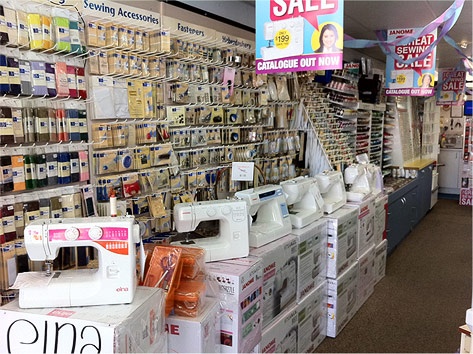
- Needles
- Threads
- Presser feet
- Sewing machine spare parts
- Bobbin cases
- Quilting tables
- Bulbs
- Embroidery hoops
- Embroidery software
- Oils
- And more
Online, over the phone, or at our retail store, we have the expertise to help you get started towards a fabulous sewing experience. Contact us today!



